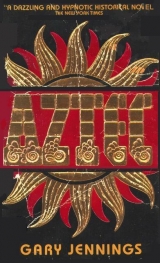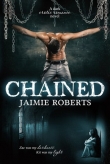
Текст книги "Aztec"
Автор книги: Gary Jennings
Жанр:
Исторические приключения
сообщить о нарушении
Текущая страница: 20 (всего у книги 75 страниц)
"It does not," he said stubbornly. "It was the Revered Speaker himself who bade me bring this, and he saw it loaded in my craft. All I am to take back is a message saying it was safely delivered. With your signature symbols, my lord, if you please."
I still could not believe what my eyes beheld and my ears were told, but I could hardly protest further. Still dazed, I gave him the note, and he and the porters withdrew. Cozcatl and I stood and looked at the unwrapped riches. Finally the boy said:
"It can only be one last gift, master, from the Lord Nezahualpili himself."
"That may be," I conceded. "He trained me up to be a palace courtier and then had to cast me adrift, as it were. And he is a man of conscience. So he has now, perhaps, supplied me with the means to engage in some other occupation."
"Occupation!" Cozcatl squeaked. "Do you mean work, master? Why should you work? There is enough here to keep you in fair comfort all your days. You, a wife, a family, a devoted slave." He added mischievously, "You once said you would build a nobleman's mansion and make me the Master of the Keys."
"Hold your tongue," I told him. "If all I wanted was idleness, I could have let Armed Scorpion send me to the after-world. I now have the means to do many things. I have only to decide what I prefer to do."
When I completed the battle report, the day before the pyramid's dedication, I took it downstairs, seeking Ahuítzotl's trophy-hung den where I had first met him. But the palace steward, looking flustered, intercepted me to accept it in his stead.
"The Revered Speaker is entertaining many notables who have come from far lands for the ceremony," said the man distractedly. "Every palace around the plaza is crammed with foreign rulers and their retinues. I do not know how or where we can accommodate many more. But I will see that Ahuítzotl gets this account of yours, when he can read it in tranquility. He will summon you for another interview after things quiet down again." And he bustled off.
As long as I was on the ground floor, I wandered through those rooms accessible to the public, just to admire the architecture and decor. Eventually I found myself in the great hall of statues, through the middle of which the canal flowed. The walls and ceiling were spangled with light reflections from the water. Several freight boats came through while I was there, their rowers admiring—as I was doing—the several sculptures of Ahuítzotl and his wives, of the patron god Huitzilopóchtli, of numerous other gods and goddesses. They were all most excellent works, most skillfully done, as they should have been: every one of them bore the incised falcon symbol of the late sculptor Tlatli.
But, as he had boasted many years before, Tlatli's work scarcely needed a signature; his god statues were indeed very different from those which had been imitated and replicated through generations of less imaginative sculptors. His distinctive vision was perhaps most evident in his depiction of Coatlicue, the goddess mother of the god Huitzilopóchtli. The massive stone object stood nearly a third again as tall as I did, and, looking up at it, I felt my back hair prickle at the eeriness of it.
Since Coatlicue was, after all, the mother of the god of war, most earlier artists had portrayed her as grim of visage, but in form she had always been recognizable as a woman. Not so in Tlatli's conception. His Coatlicue had no head. Instead, above her shoulders, two great serpents' heads met, as if kissing, to compose her face: their single visible eye apiece gave Coatlicue two glaring eyes, their meeting mouths gave Coatlicue one wide mouth full of fangs and horribly grinning. She wore a necklace hung with a skull, with severed hands and torn-out human hearts. Her nether garment was entirely of writhing snakes, and her feet were the taloned paws of some immense beast. It was a unique and original image of a female deity, but a gruesome one, and I believe that only a cuilóntli man who could not love women could have carved a goddess so egregiously monstrous.
I followed the canal out of that chamber, under the weeping willows that overhung it in the courtyard garden, and into the chamber on the other side of the palace, where the walls were covered with murals. They mostly depicted the military and civic deeds done by Ahuítzotl before and since his accession to the throne: himself the most prominent participant in various battles, himself supervising the finishing touches on the Great Pyramid. But the pictures were alive, not stiff; they teemed with detail; they were artfully colored. As I had expected, the murals were finer than any other modern paintings I had seen. Because, as I had expected, each of them was signed in its lowermost right corner with the blood-red print of Chimali's hand.
I wondered if he was yet back in Tenochtítlan, and if we would meet, and how he would go about killing me if we did. I went in search of my little slave Cozcatl, and gave him instructions:
"You know the artist Chimali by sight, and you know that he has reason to wish me dead. I shall have duties to perform tomorrow, so I cannot keep looking over my shoulder for an assassin. I want you to circulate among the throng and then come to warn me if you see Chimali. In tomorrow's crowd and confusion, he may hope to knife me unobserved and slip away unsuspected."
"He cannot, if I see him first," Cozcatl said staunchly. "And I promise, if he is present, I will see him. Have I not been useful before, master, at being your eyes?"
I said, "You have indeed, young one. And your vigilance and loyalty will not go unrewarded."
* * *
Yes, Your Excellency, I know that you are most particularly interested in our former religious observances, hence your attendance here today. Although I was never a priest, nor much of a friend to priests, I will explain the dedication of the Great Pyramid—the manner of it and the significance of it—as well as I can.
If that was not the most resplendent, populous, and awesome celebration ever held in the history of the Mexíca, it certainly outdid all others I beheld in my time. The Heart of the One World was a solid mass of people, of colorful fabrics, of perfumes, of feather plumes, of flesh, of gold, of body heat, of jewels, of sweat. One reason for the crowding was that lanes had to be kept open—by cordons of guards, their arms linked, struggling to contain the jostling mob—so the lines of prisoners could march to the pyramid and ascend to the sacrificial altar. But the spectator crush was also due to the fact that the standing room in the plaza had been reduced by the building of numerous new temples over the years, not to mention the gradually spreading bulk of the Great Pyramid itself.
Since Your Excellency never saw it, perhaps I had better describe that icpac tlamanacali. Its base was square, one hundred and fifty paces from one corner to the next, the four sides sloping inward as they rose, until the pyramid's flat summit measured seventy paces to a side. The staircase ascending its front or western incline was actually two stairways, one each for those persons climbing and descending, separated by an ornamental gutter for blood to flow down. Fifty and two stairs of steep risers and narrow treads led to a terrace that encircled the pyramid a third of the way up. Then another flight of one hundred and four steps culminated in the platform on top, with its temples and their appurtenances. At either side of every thirteenth step of the staircase stood the stone image of some god, major or minor, its stone fists holding aloft a tall pole from which floated a white feather banner.
To a man standing at the very bottom of the Great Pyramid, the structures on top were invisible. From the bottom he could see only the broad dual staircase ascending, appearing to narrow, and seeming to lead even higher than it did—into the blue sky or, on other occasions, into the sunrise. A xochimíqui trudging up the stairs toward his Flowery Death must have felt that he was truly climbing toward the very heavens of the high gods.
But when he reached the top, he would find first the small, pyramidal sacrificial stone and behind that the two temples. In a sense, those teocaltin represented war and peace, for the one on the right was the abode of Huitzilopóchtli, responsible for our military prowess, and in the one on the left dwelt Tlaloc, responsible for our harvests and peacetime prosperity. Perhaps there should rightly have been a third teocali for the sun Tonatíu, but he already had a separate sanctuary on a more modest pyramid elsewhere in the plaza, as did several other important gods. There was also in the plaza the temple in which were ranked the images of numerous gods of subordinate nations.
The new temples of Tlaloc and Huitzilopóchtli, atop the new Great Pyramid, were but square stone rooms, each containing a hollow stone statue of the god, his mouth wide open to receive nourishment. But each temple was made much taller and more impressive by a towering stone facade or roof comb: Huitzilopóchtli's indented with angular and red-painted designs, Tlaloc's indented with rounded and blue-painted designs. The body of the pyramid was predominantly a gleaming almost-silver gesso white, but the two serpentine banisters, one along each flank of the dual staircase, were painted with reptilian scales of red, blue, and green, and their big snake heads, stretching out at the ground level, were entirely covered with beaten gold.
When the ceremony began, at the first full light of day, the chief priests of Tlaloc and Huitzilopóchtli, with all their assistants, were fussing around the temples at the top of the pyramid, doing whatever it is that priests do at the last moment. On the terrace encircling the pyramid stood the more distinguished guests: Tenochtítlan's Revered Speaker Ahuítzotl, naturally, with Texcóco's Revered Speaker Nezahualpili and Tlácopan's Revered Speaker Chimalpopoca. There were also the rulers of other cities, provinces, and nations—from far-flung Mexíca domains, from the Tzapoteca lands, from the Mixteca, from the Totonaca, from the Huaxteca, from nations whose names I did not then even know. Not present, of course, was that implacably inimical ruler, old Xicotenca of Texcala, but Yquingare of Michihuácan was there.
Think of it, Your Excellency. If your Captain-General Cortés had arrived in the plaza on that day, he could have accomplished our overthrow with one swift and easy slaughter of almost all our rightful rulers. He could have proclaimed himself, there and then, the lord of practically all of what is now New Spain, and our leaderless peoples would have been hard put to dispute him. They would have been like a beheaded animal which can twitch and flail only futilely. We would have been spared, I now realize, much of the misery and suffering we later endured. But yyo ayyo! On that day we celebrated the might of the Mexíca, and we did not even suspect the existence of such things as white men, and we supposed that our roads and our days led ahead into a limitless future. Indeed, we did have some years of vigor and glory still before us, so I am glad—even knowing what I know—I am glad that no alien intruder spoiled that splendid day.
The morning was devoted to entertainments. There was much singing and dancing by the troupes from this very House of Song in which we now sit, Your Excellency, and they were far more professionally skilled than any performers I had seen or heard in Texcóco or Xaltócan—though to me none equaled the grace of my lost Tzitzitlini. There were the familiar instruments: the single thunder drum, the several god drums, the water drums, the suspended gourds, the reed flutes and shin-bone flutes and sweet-potato flutes. But the singers and dancers were also accompanied by other instruments of a complexity I had not seen elsewhere. One was called "the warbling waters," a flute which sent its notes bubbling through a water jug, with an echo effect. There was another flute, made of clay, shaped rather like a thick dish, and its player did not move his lips or fingers; he moved his head about while he blew into the mouthpiece, so that a small clay ball inside the flute rolled to stop one hole or another around its rim. And, of course, of every kind of instrument there were many. Their combined music must have been audible to any stay-at-homes in every community around all the five lakes.
The musicians, singers, and dancers performed on the lower steps of the pyramid and on a cleared space directly in front of it. Whenever they tired and required a rest, their place was taken by athletic performers. Strong men lifted prodigious weights of stone, or tossed nearly naked beautiful girls back and forth to each other as if the girls had been feathers. Acrobats outdid grasshoppers and rabbits with their leaping, tumbling antics. Or they stood upon each other's shoulders—ten, then twenty, then forty men at a time—to form human representations of the Great Pyramid itself. Comic dwarfs performed grotesque and indecent pantomimes. Jugglers kept incredible numbers of tlachtli balls spinning aloft, from hand to hand, in intricate looping patterns—
No, Your Excellency, I do not mean to imply that the morning's entertainments were a mere diversion (as you put it) to lighten the horror to come (as you put it), and I do not know what you mean when you mutter of "bread and circuses." Your Excellency must not infer that those merriments were in any wise irreverent. Every performer dedicated his particular trick or talent to the gods we honored that day. If the performances were not somber but frolicsome, it was to cajole the gods into a mood to receive with gratitude our later offerings.
Everything done that morning had some connection with our religious beliefs or customs or traditions, though the relation might not be immediately evident to a foreign observer like Your Excellency. For example, there were the tocotine, come on invitation from the Totonaca oceanside lands where their distinctive sport had been invented—or perhaps god-inspired. Their performance required the erection of an exceptionally tall tree trunk in a socket specially drilled in the plaza marble. A live bird was placed in that hole, and mashed by the insertion of the tree trunk, so that its blood would lend the tocotine the strength they would need for flying. Yes, flying.
The erected pole stood almost as tall as the Great Pyramid. At its top was a tiny wooden platform, no bigger than a man's circled arms. Twined all down the pole was a loose meshing of stout ropes. Five Totonaca men climbed the pole to its top, one carrying a flute and a small drum tied to his loincloth, the other four unencumbered except for a profusion of bright feathers. In fact, they were totally naked except for those feathers glued to their arms. Arriving at the platform, the four feathered men somehow sat around the edge of the wooden piece, while the fifth man slowly, precariously got to his feet and stood upon it.
There on that constricted space he stood, dizzyingly high, and then he stamped one foot and then the other, and then he began to dance, accompanying himself with flute and drum. The drum he patted and pounded with one hand while his other manipulated the holes of the flute on which he blew. Though everyone watching from the plaza below was breathlessly quiet, the music came down to us as only the thinnest tweedling and thumping. Meanwhile, the other four tocotine were cautiously knotting the pole's rope ends around their ankles, but we could not see it, so high up they were. When they were ready, the dancing man made some signal to the musicians in the plaza.
Ba-ra-ROOM! There was a thunderous concussion of music and drumming that made every spectator jump, and, at the same instant, the four men atop the pole also jumped—into empty air. They flung themselves outward and spread their arms, the full length of which were feathered. Each of the men was feathered like a different bird: a red macaw, a blue fisher bird, a green parrot, a yellow toucan—and his arms were his outstretched wings. That first leap carried the tocotine a distance outward from the platform, but then the ropes around their ankles jerked them up short. They would all have fallen back against the pole, except for the ingenious way the ropes were twined. The men's initial leap outward became a slow circling around the pole, each of the men equidistant from the others, and each still in the graceful posture of a spread-winged, hovering bird.
While the man on top went on dancing and the musicians below played a trilling, lilting, pulsing accompaniment, the four bird-men continued to circle and, as the ropes gradually unwound from the pole, they circled farther out and slowly came lower. But the men, like birds, could tilt their feathered arms so that they rose and dipped and soared up and down past each other as if they too danced—but in all the dimensions of the sky.
Each man's rope was wrapped thirteen times around and down the extent of the pole. On his final circuit, when his body was swinging in its widest and swiftest circle, almost touching the plaza pavement, he arched his body and backed his wings against the air—exactly in the manner of a bird alighting—so that he skimmed to the ground feet first, and the rope came loose, and he ran to a stop. All four did that at the same moment. Then one of them held his rope taut for the fifth man to slide down to the plaza.
If Your Excellency has read some of my previous explanations of our beliefs, you will have realized that the sport of the tocotine was not simply an acrobatic feat, but that each aspect of it had some significance. The four fliers were partly feathered, partly flesh, like Quetzalcoatl, the Feathered Serpent. The four circling men with the dancing man among them represented our five points of the compass: north, east, west, south, and center. The thirteen turns of each rope corresponded to the thirteen day and year numbers of our ritual calendar. And four times thirteen makes fifty and two, the number of years in a sheaf of years. There were more subtle relevances—the word tocotine means "the sowers"—but I will not expatiate on those things, for I perceive that Your Excellency is more eager to hear of the sacrificial part of the dedication ceremony.
The night before, after they had all confessed to Filth Eater's priests, our Texcalteca prisoners had been moved to the perimeter of the island and divided into three herds, so that they could move toward the Great Pyramid along the three broad avenues leading into the plaza. The first prisoner to approach, well forward of the rest, was my own: Armed Scorpion. He had haughtily declined to ride a liner chair to his Flowery Death, but came with his arms across the shoulders of two solicitous brother knights, though they were of course Mexíca. Armed Scorpion swung along between them, the remains of his legs dangling like gnawed roots. I was positioned at the base of the pyramid, where I fell in beside the three and accompanied them up the staircase to the terrace where all the nobles waited.
To my beloved son, the Revered Speaker Ahuítzotl said, "As our xochimíqui of highest rank and most distinction, Armed Scorpion, you have the honor of going first to the Flowery Death. However, as a Jaguar Knight of long and notable reputation, you may choose instead to fight for your life on the Battle Stone. What is your wish?"
The prisoner sighed. "I no longer have a life, my lord. But it would be good to fight one last time. If I may choose, then, I choose the Battle Stone."
"A decision worthy of a warrior," said Ahuítzotl. "And you will be honored with worthy opponents, our own highest-ranking knights. Guards, assist the esteemed Armed Scorpion to the stone and gird him for hand-to-hand combat."
I went along to watch. The Battle Stone, as I have earlier told, was the former Uey-Tlatoani Tixoc's one contribution to the plaza: that broad, squat cylinder of volcanic rock situated between the Great Pyramid and the Sun Stone. It was reserved for any warrior who merited the distinction of dying as he had lived, still fighting. But a prisoner who chose to duel on the Battle Stone was required to fight not just one opponent. If, by guile and prowess, he bested one man, another Mexícatl knight would take up the fray, and another and another—four in all. One of those was bound to kill him... or at least that was the way the duels had always ended before.
Armed Scorpion was dressed in full battle armor of quilted cotton, plus his knightly regalia of jaguar skin and helmet. Then he was placed upon the stone where, having no feet, he could not even stand. His opponent, armed with an obsidian-bladed maquahuitl, had the advantage of being able to leap on and off the pedestal, and to attack from any direction. Armed Scorpion was given two weapons with which to defend himself, but they were poor things. One was simply a wooden staff for warding off his attacker's blows. The other was a maquahuitl, but the harmless play-kind used by novice soldiers in training: its obsidian flakes removed and replaced by tufts of feathery down.
Armed Scorpion sat near one edge of the stone, in a posture almost of relaxed anticipation, the bladeless sword in his right hand, the wooden staff gripped by his left and lying across his lap. His first opponent was one of the two Jaguar Knights who had helped him into the plaza. The Mexícatl leapt onto the Battle Stone at the left side of Armed Scorpion; that is, on the side away from his offensive weapon, the maquahuitl. But Armed Scorpion surprised the man. He did not even move the weapon, he used his defensive staff instead. He swung it, hard, in an up-curving arc. The Mexícatl, who could scarcely have expected to be attacked with a mere pole, caught it under his chin. His jaw was broken and he was knocked senseless. Some of the crowd murmured in admiration and others owl-hooted in applause. Armed Scorpion simply sat, the wooden staff held languidly resting on his left shoulder.
The second duelist was Armed Scorpion's other supporting Jaguar Knight. He, naturally supposing that the prisoner's first win had been only a caprice of fortune, also bounded onto the stone at Armed Scorpion's left, his obsidian blade poised to strike, his eyes fixed on the seated man's own maquahuitl. That time, Armed Scorpion lashed overhand with his defensive staff, over the knight's uplifted weapon hand, and brought the pole crashing down between the ears of the Mexican's jaguar-head helmet. The man fell backward off the Battle Stone, his skull fractured, and he was dead before he could be attended by any physician. The spectators' murmurs and hoots increased in volume.
The third opponent was an Arrow Knight, and he was justly wary of the Texcaltecatl's not at all harmless staff. He leapt onto the stone from the right, and swung his maquahuitl in the same movement. Armed Scorpion again brought up his staff, but only to parry the swinging sword to one side. That time he also used his own maquahuitl, though in an unusual way. He jabbed the hard blunt end of it upward, with all his strength, into the Arrow Knight's throat. It crushed that prominence of cartilage which you Spaniards call "the nut of the neck." The Mexícatl fell and writhed, and he strangled to death, right there on the Battle Stone.
As the guards removed that limp carcass, the crowd was going wild with shouts and hoots of encouragement—not for their Mexíca warriors, but for the Texcaltecatl. Even the nobles high on the pyramid were milling about and conversing excitedly. In the memory of no one present had a prisoner, even a prisoner with the use of all his limbs, ever bested as many as three opposing duelists.
But the fourth was the certain slayer, for the fourth was one of our rare left-handed fighters. Practically all warriors were naturally right-handed, had learned to fight right-handed, and had fought in that manner all their lives. So, as is well known, a right-handed warrior is perplexed and confounded when he comes up against a left-handed combatant who is, in effect, a mirror image striking him.
The left-handed man, a knight of the Eagle Order, took his time climbing onto the Battle Stone. He came leisurely to the duel, smiling cruelly and confidently. Armed Scorpion still sat, his staff in his left hand, his maquahuitl naturally in his right. The Eagle Knight, sword in his left hand, made a distracting feint and then leapt forward. As he did so, Armed Scorpion moved as deftly as any of the morning's jugglers. He tossed his staff and maquahuitl a little way into the air and caught them in the opposite hands. The Mexícatl knight, at that unexpected display of ambidexterity, checked his lunge as if to draw back and reconsider. He did not get the chance.
Armed Scorpion clapped his blade and staff together on the knight's left wrist, twisted them, and the man's maquahuitl fell out of his hand. Holding the Mexican's wrist pinned between his wooden weapons, as in a parrot's strong beak, Armed Scorpion for the first time drew himself up from his sitting position, to kneel on his knees and stumps. With unbelievable strength, he twisted his two weapons still farther, and the Eagle Knight had to twist with them, and he fell on his back. The Texcaltecatl immediately laid the edge of his wooden blade across the supine man's throat. Placing one hand on either end of the wood, he knelt over and leaned heavily. The man thrashed under him, and Armed Scorpion lifted his head to look up at the pyramid, at the nobles.
Ahuítzotl, Nezahualpili, Chimalpopoca, and the others on the terrace conferred, their gesticulations expressing admiration and wonderment. Then Ahuítzotl stepped to the edge of the platform and made a raising, beckoning movement with his hand. Armed Scorpion leaned back and lifted the maquahuitl off the fallen man's neck. That one sat up, shakily, rubbing his throat, looking both unbelieving and embarrassed. He and Armed Scorpion were brought together to the terrace. I accompanied them, glowing with pride in my beloved son. Ahuítzotl said to him:
"Armed Scorpion, you have done something unheard of. You have fought for your life on the Battle Stone, under greater handicap than any previous duelist, and you have won. This swagger whom you last defeated will take your place as xochimíqui of the first sacrifice. You are free to go home to Texcala."
Armed Scorpion firmly shook his head. "Even if I could walk home, my Lord Speaker, I would not. A prisoner once taken is a man destined by his tonáli and the gods to die. I should shame my family, my fellow knights, all of Texcala, if I returned dishonorably alive. No, my lord, I have had what I requested—one last fight—and it was a good fight. Let your Eagle Knight live. A left-handed warrior is too rare and valuable to discard."
"If that is your wish," said the Uey-Tlatoani, "then he lives. We are prepared to grant any other wish of yours. Only speak it."
"That I now be allowed to go to my Flowery Death, and to the warriors' afterworld."
"Granted," said Ahuítzotl and then, magnanimously, "The Revered Speaker Nezahualpili and myself will be honored to bear you thither."
Armed Scorpion spoke just once more, to his captor, to me, as was customary, to ask the routine question, "Has my revered father any message he would like me to convey to the gods?"
I smiled and said, "Yes, my beloved son. Tell the gods that I wish only that you be rewarded in death as you have deserved in life. That you live the richest of afterlives, forever and forever."
He nodded, and then, with his arms across the shoulders of two Revered Speakers, he went up the remaining stairs to the stone block. The assembled priests, almost frenzied with delight at the auspicious events attendant on that first sacrifice of the day, made a great show of waving incense pots around, and throwing smoke colorings into the urn fires, and chanting invocations to the gods. The warrior Armed Scorpion was accorded two final honors. Ahuítzotl himself wielded the obsidian knife. The plucked-out heart was handed to Nezahualpili, who took it in a ladle, carried it into the temple of Huitzilopóchtli, and fed it into the god's open mouth.
That ended my participation in the ceremonies, at least until the coming night's feasting, so I descended the pyramid and stood off to one side. After the dispatch of Armed Scorpion, all the rest was rather anticlimactic, except for the sheer magnitude of the sacrifice: the thousands of xochimíque, more than ever had before been granted the Flowery Death in one day.
Ahuítzotl ladled the second prisoner's heart into the mouth of Tlaloc's statue, then he and Nezahualpili descended again to the pyramid terrace. They and their fellow rulers also stood off to one side, out of the way, and, when they tired of watching the proceedings, idly talked among themselves of whatever Revered Speakers talk about. Meanwhile, the three long lines of captives shuffled in single file along the avenues Tlácopan, Ixtapalápan, and Tepeyáca, and into The Heart of the One World, and between the close-pressing ranks of spectators, and one behind another up the pyramid staircase.
The hearts of the first xochimíque, perhaps the first two hundred of them, were ceremoniously ladled into the mouths of Tlaloc and Huitzilopóchtli until the statues' hollow insides could hold no more, and the stone lips of the two gods drooled and dribbled blood. Of course, those hearts crammed into the statues' cavities would in time rot down to a sludge and make room for more. But that day, since the priests had an overabundance of hearts, the ones later plucked out were tossed into waiting bowls. When the bowls were filled and heaped with hearts, still steaming, some still feebly pulsing, under-priests took them and hurried down the Great Pyramid, into the plaza and the streets of the rest of the island. They delivered the surplus bounty to every other pyramid, temple, and god statue in both Tenochtítlan and Tlalteloco—and, as the afternoon wore on, to temples in the mainland cities as well.








